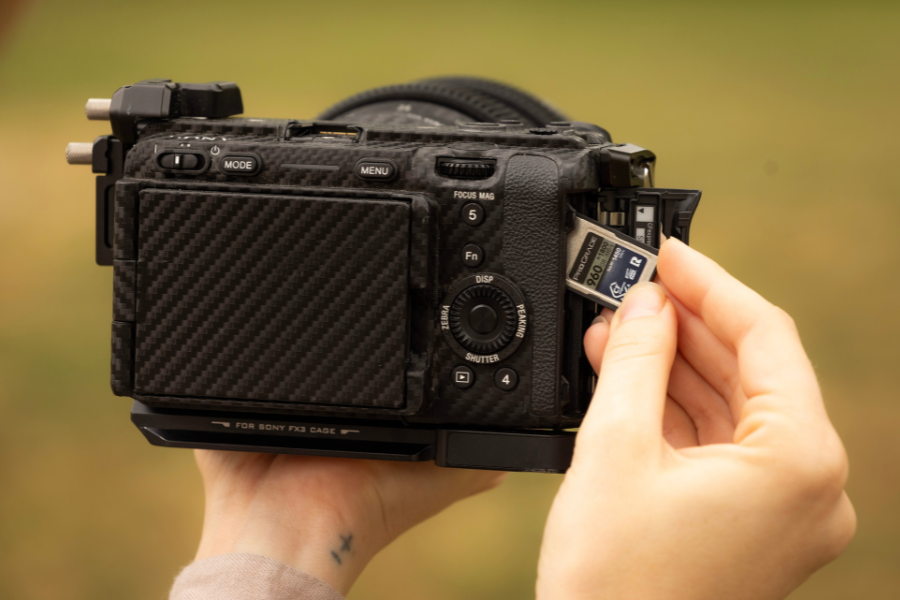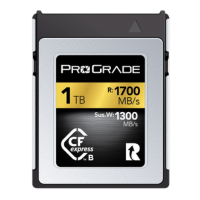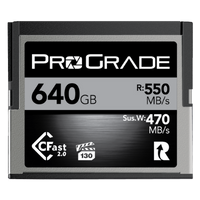Behind every high-quality photo and video capture is a memory card, silently ensuring that each click and record button stores precious moments reliably. But like any essential piece of equipment, memory cards require proper care and maintenance to perform at their best. Without it, you risk data loss, corruption, or unreliable performance.
In this guide, we’ll walk you through essential tips and best practices for maintaining your memory cards. From proper handling and storage to preventing data corruption, you’ll gain expert insights to keep your memory cards in optimal condition, ensuring they’re always ready when it matters most.
Let’s dive into how you can protect and maximize the life of your memory cards, which are essential for capturing high-quality images and video.
Understanding Memory Card Basics
Memory cards are available in various formats, each catering to different needs. SD cards and microSD cards are the most commonly used, fitting neatly into digital cameras, smartphones, and action cameras.
CFast cards have long been favored by professionals for their reliability. In contrast, the more recent CFexpress Type A and CFexpress Type B cards are designed for high-end photography and videography and offer remarkable speeds and capacities. Despite these variations, all memory cards operate on the same core technology: flash memory.
How Memory Cards Work?
Memory cards store data using NAND flash memory, a non-volatile memory that allows the card to retain data even without power. Inside each card, you’ll find a controller and a NAND flash memory chip. The NAND flash memory chip is responsible for storing data, while the controller is responsible for managing data (reading and writing).
Flash memory stores data in microscopic memory cells. Each cell holds only one bit of data, so a 1.6TB memory card has over 12 TRILLION of those cells.
When you take a photo or record a video, your camera translates the light captured by the sensor into digital pixel values. This binary data is written to the memory card by passing an electrical current through tiny transistors in the memory cells. The transistors switch either “on” or “off,” representing the binary values of 1s and 0s. If a transistor is “on,” it stores a 1; if it’s “off,” it stores a 0.
Unfortunately, each flash memory cell has a limited number of write cycles, meaning data can only be written to a memory cell a certain number of times before it starts to wear out.
The good news is that though the write cycles are limited, they are by no means low. In fact, with proper usage, maintenance, and care, you can easily extend the lifespan of a high-quality memory card to 10+ years.
Why Do Memory Cards Slow Down Over Time?
Memory cards can slow down over time, mainly due to data fragmentations. For example, whenever you delete images or videos from a memory card, gaps or “holes” are left in the data. To fill these gaps, the memory card controller engages in a process called “garbage collection.” This process attempts to clean up and reorganize data by moving it around to create contiguous blocks of free space.
This additional data management can slow down the card if the controller must patch the gaps on the card while simultaneously writing the incoming data. The extra workload forces the card to perform two tasks at once and may, therefore, result in noticeably slower performance.
Since this data reorganization on a memory card also requires additional read-write cycles, it puts extra strain on the card’s memory cells. Even though you may fill and empty your card only once, fragmented data can cause some parts of the card to undergo multiple cycles, leading to faster aging. Over time, this can likewise contribute to slower read and write speeds.
At some point, the reduced performance of a memory card may no longer be sufficient for bursting RAW images or handling high-resolution video files that require rapid and sustained writing. This decline in the card’s ability to write data efficiently to the flash chip can result in slower burst speeds, dropped frames, data storage errors, and even data corruption.
Best Practices for Maintaining Memory Cards to Ensure Optimal Photo and Video Quality
1. Use Only High-Quality Memory Cards
Ensuring optimal performance starts with the memory card itself. Trying to get better performance out of a consumer-grade card is like using a regular sedan in a high-speed car race—it simply can’t handle the demands. Memory cards built for professional use offer superior build quality, greater durability, and advanced wear-leveling algorithms.
The more intelligent controller chips of high-quality memory cards distribute data evenly across all memory cells, ensuring no single cell is overused. This prevents individual memory cells from wearing out too quickly and naturally increases the memory card’s lifespan and performance.
High-quality memory cards are also designed with sufficient headroom, meaning they are much faster than camera manufacturers require. So, even if there is a slight drop in speed in some extreme cases, it won’t affect the card’s ability to handle data-intensive tasks, like recording 4K, 6K, or even 8K video.
2. Avoid Fragmenting Data
The way you use your memory card significantly affects its performance.
Deleting images from the card mid-shoot to make room for new photos fragments the data and can accelerate wear and tear. Instead, make it a habit not to delete anything on your camera. Always transfer files to your computer before deleting them.
This simple practice will help minimize data fragmentation and ensure your memory cards will perform at their peak for longer.
3. Use Multiple Memory Cards
What’s better than one professional-grade memory card? Multiple professional-grade memory cards.
Using multiple cards not only distributes wear and tear across several cards, ensuring that no single card is overly strained, but it also provides ample storage space, eliminating the need to delete files mid-shoot in the first place.
By having multiple memory cards, you can easily switch to a new card once the current one fills up, avoiding the need to delete anything on the spot. Multiple high-quality memory cards provide peace of mind and ensure you’re never forced to compromise your shoot. Plus, it’s reassuring to have a backup if something goes wrong.
4. Handle with Care
Rough handling during insertion, removal, or data transfer is a leading cause of memory card performance decreases. When inserting or removing a card, do so gently to avoid damaging the card’s connectors or the slot in your camera.
Also, abruptly removing the card during data transfer or removing the power source (disconnecting the card reader or pulling out the camera’s battery) while the card is in use may lead to data corruption or card failure. Always safely eject the card and power off the camera when you need to remove it.
5. Store Memory Cards Safely
Storing memory cards in pockets or loosely in a bag is not ideal. When not in use, keep your cards in protective cases to shield them from physical damage, dust, and moisture. Choose a cool, dry environment for longer storage. Avoid direct sunlight, drastic temperature changes, and humidity.
6. Keep Memory Cards Clean
If dirt, moisture, or smudges appear on the memory card or its contacts, gently wipe them with a soft, dry microfiber cloth. Avoid using liquids or abrasive materials.
Similarly, ensure the card slots in your camera or reader are debris-free before inserting a memory card. Dust or dirt can damage both the card and the slot. Only use cards that are clean and dry if you do not want to risk losing optimal performance.
7. Label and Organize Memory Cards
Proper memory card labeling and organization are essential for efficiently managing digital storage and ensuring the longevity of your data. Label each card with a unique identifier or description to easily determine its contents and usage history. Organize them in a dedicated storage case, grouping cards by function or content.
Without proper labeling and organization, you might find yourself repeatedly inserting and removing multiple cards to check their contents during data transfer sessions or whenever you are looking for an empty card when shooting. This repeated handling introduces unnecessary wear and increases the risk of physical damage.
Furthermore, clearly separating used and unused cards and formatting all cards before a shoot ensures that you are fully prepared and lowers the likelihood of accidentally deleting or overwriting valuable data. This methodical approach minimizes errors, protects your content, and ensures quick access to the right card when needed.
8. Monitor and Maintain Your Memory Cards
Proper maintenance of your memory cards is essential for peak performance. Regularly formatting and defragmenting your cards is an essential part of the maintenance procedure.
Keep in mind that this formatting needs to be done on the computer as the camera doesn’t actually erase the memory card’s contents but only clears the File Allocation Table (FAT), allowing data to be overwritten. This means the card still undergoes “garbage collection” to manage any existing fragmentation, unnecessarily shuffling already deleted, obsolete data.
However, formatting large-capacity cards using your computer can be time-consuming—it can literally take hours in some cases. That’s why we developed Refresh Pro, a one-of-a-kind memory card maintenance software that turns those upkeep hours into seconds.
In mere seconds, the “sanitize” command in Refresh Pro defragments and reformats the card’s flash memory chip to a factory-new condition, maximizing performance and extending the card’s lifespan. Additionally, the software’s health monitoring feature provides a health score, indicating whether the card can be confidently used, should be used with caution, or needs to be replaced.
Final Words: Maintaining Memory Cards for Optimal Photo and Video Quality
Understanding how memory cards work, following these simple best usage practices, and implementing this straightforward maintenance routine will greatly enhance your card’s performance and longevity.
Taking a few moments to properly care for your memory cards can save you from headaches and lost data down the road. Remember, a little effort goes a long way in keeping your card’s optimal performance and digital memories safe and sound.





